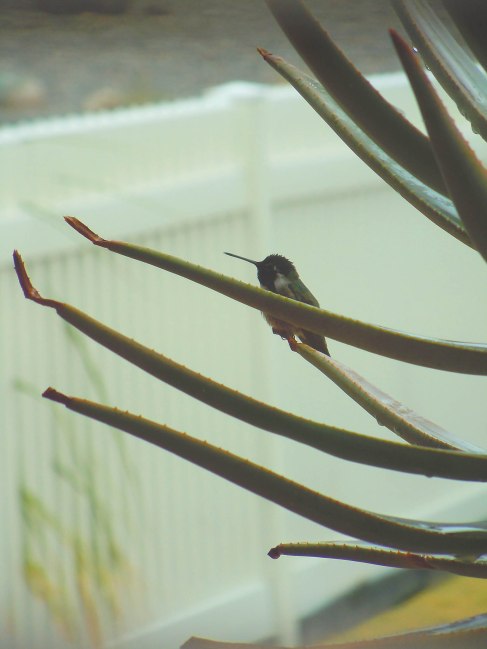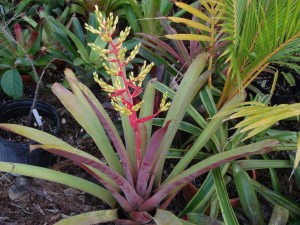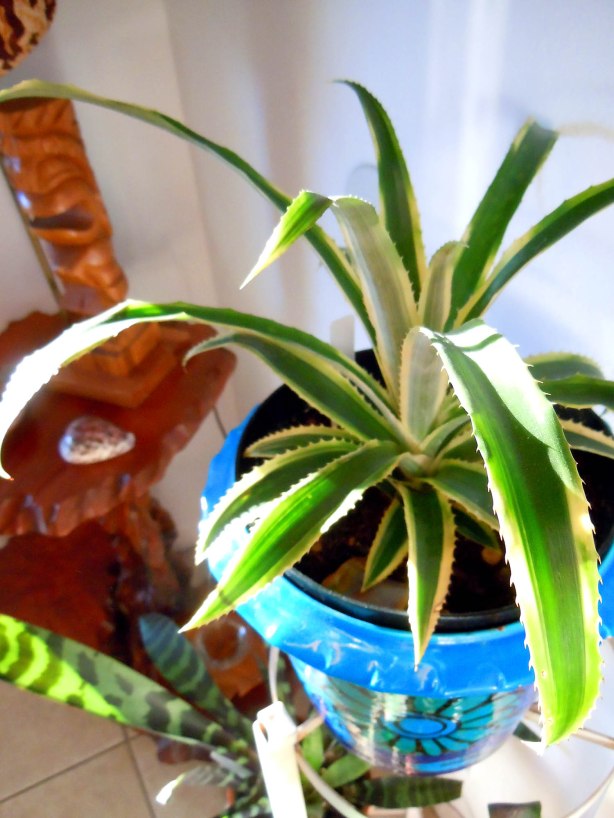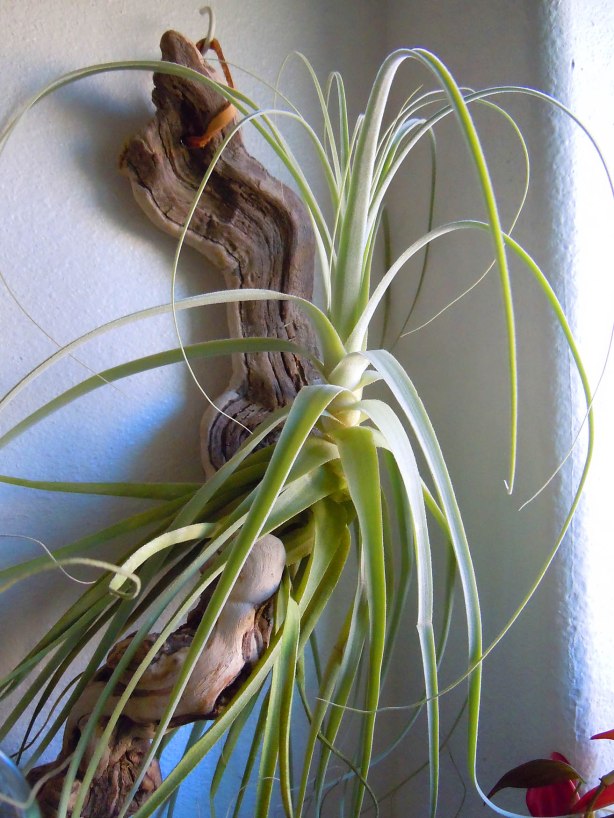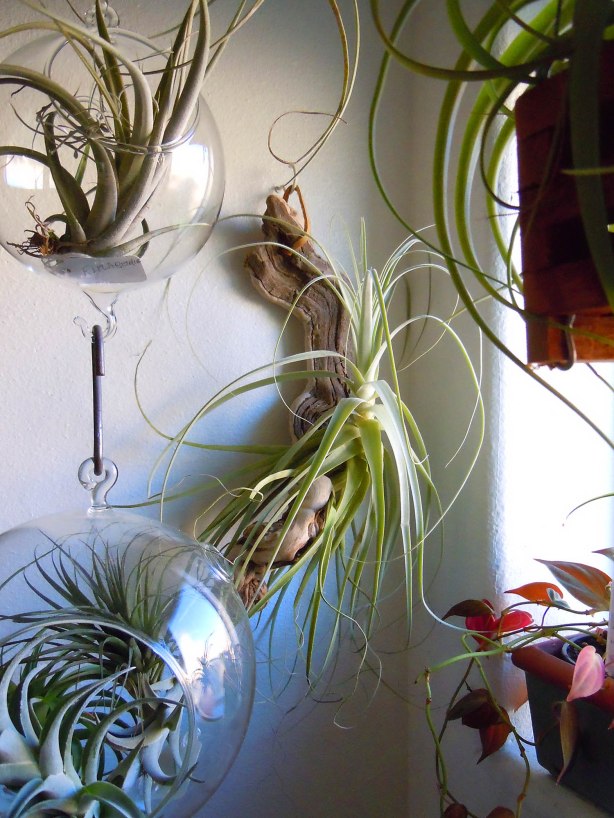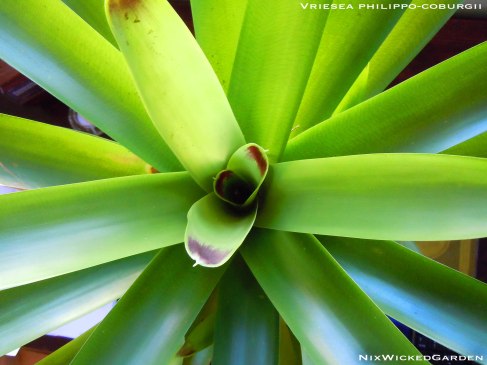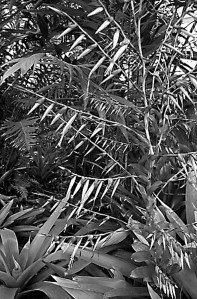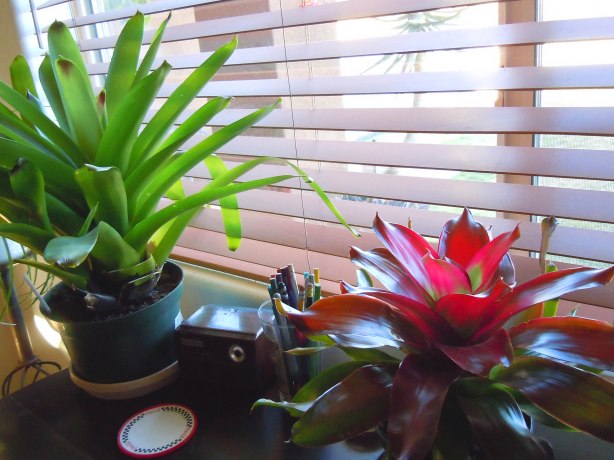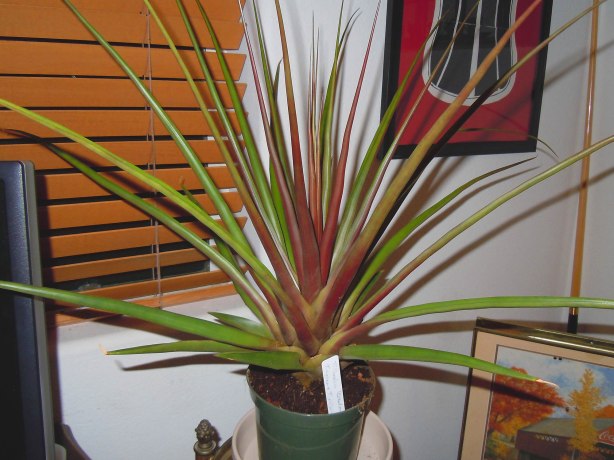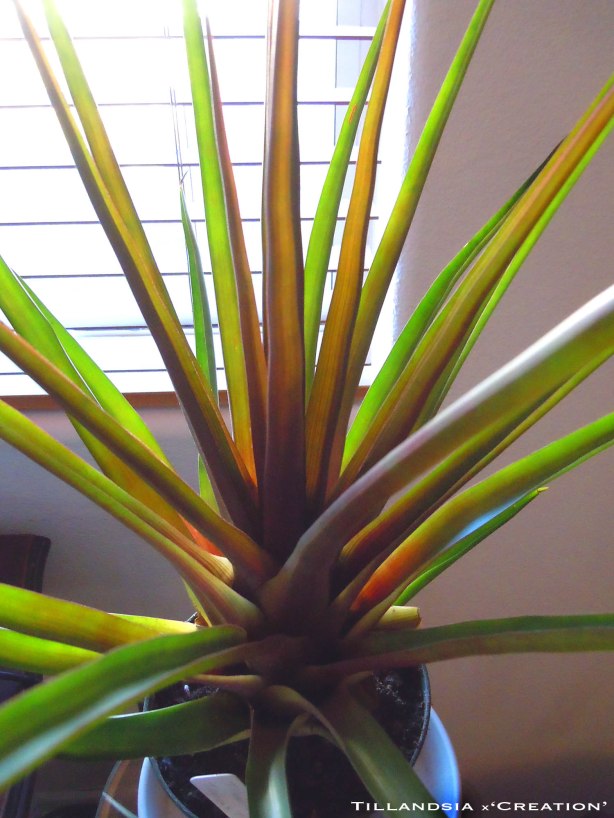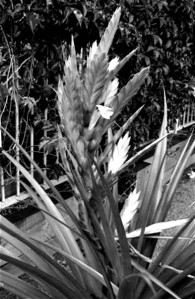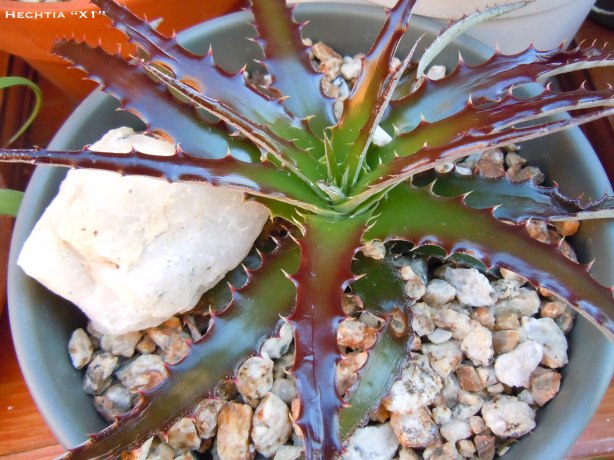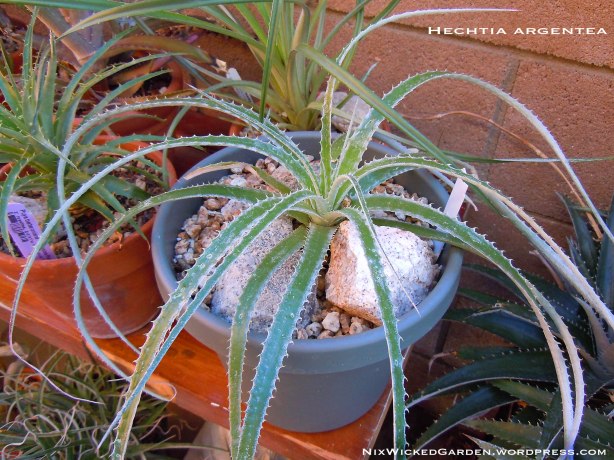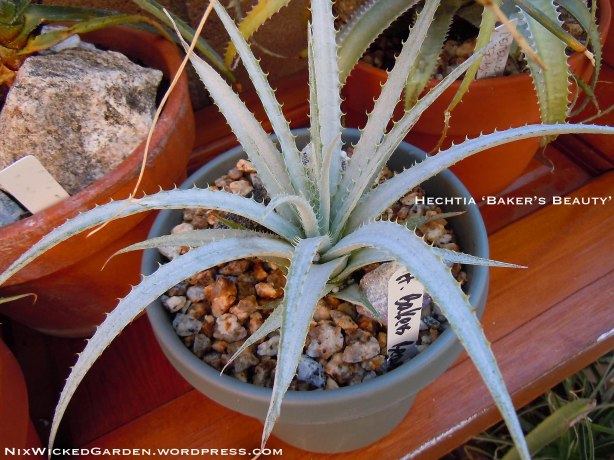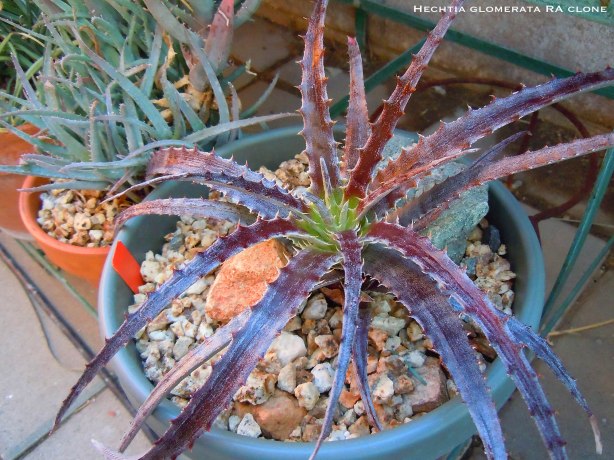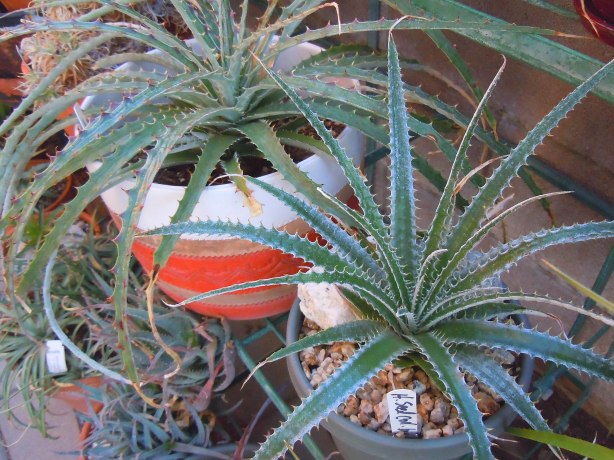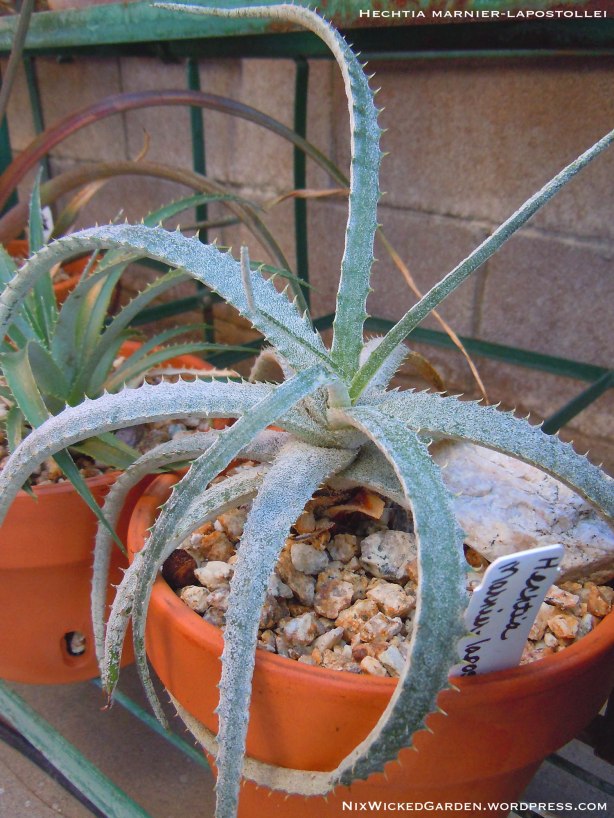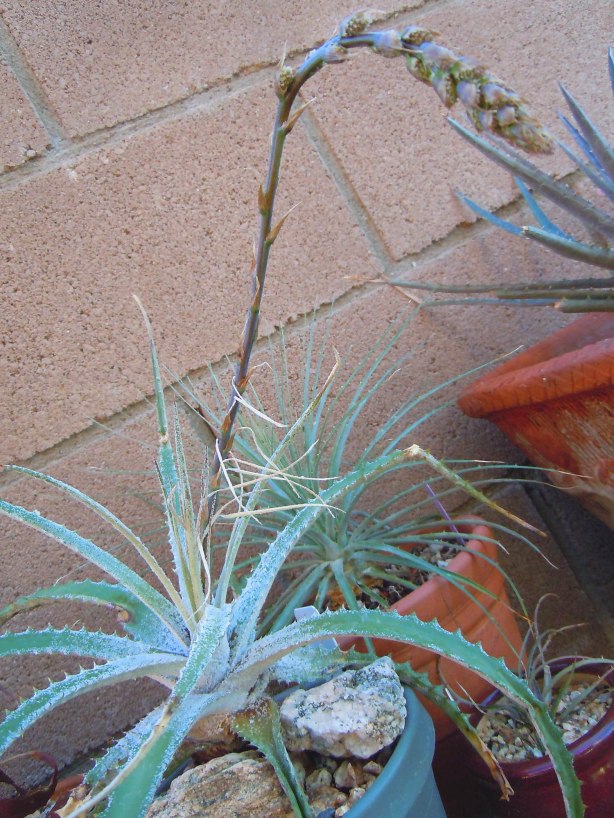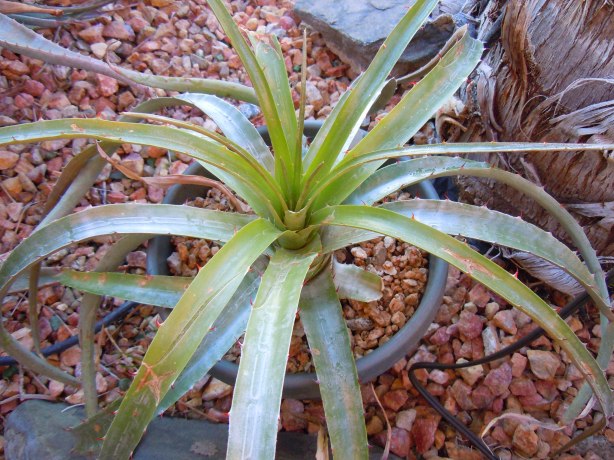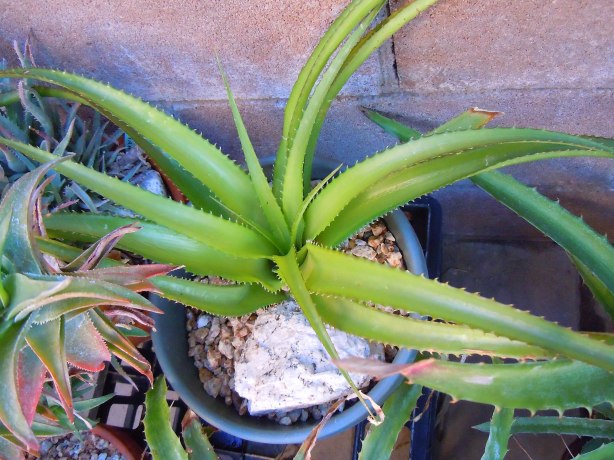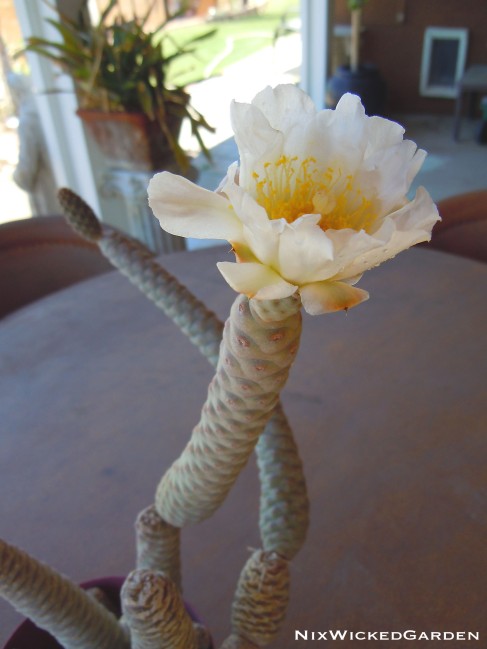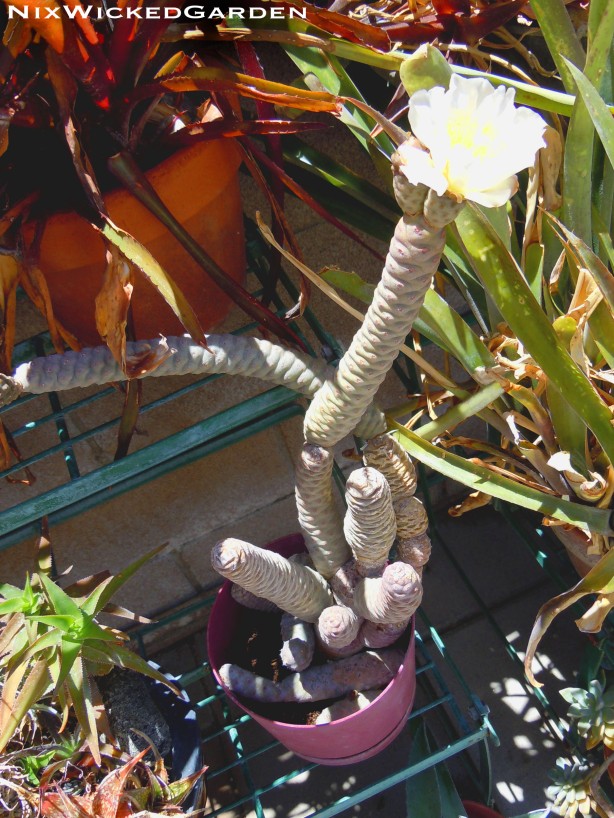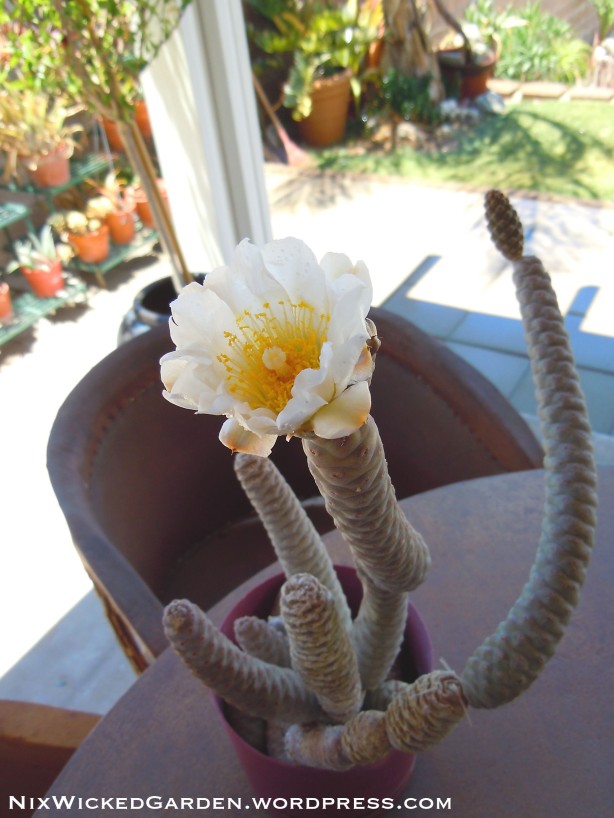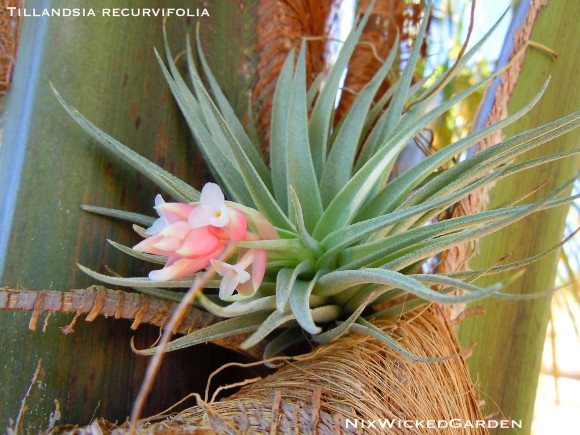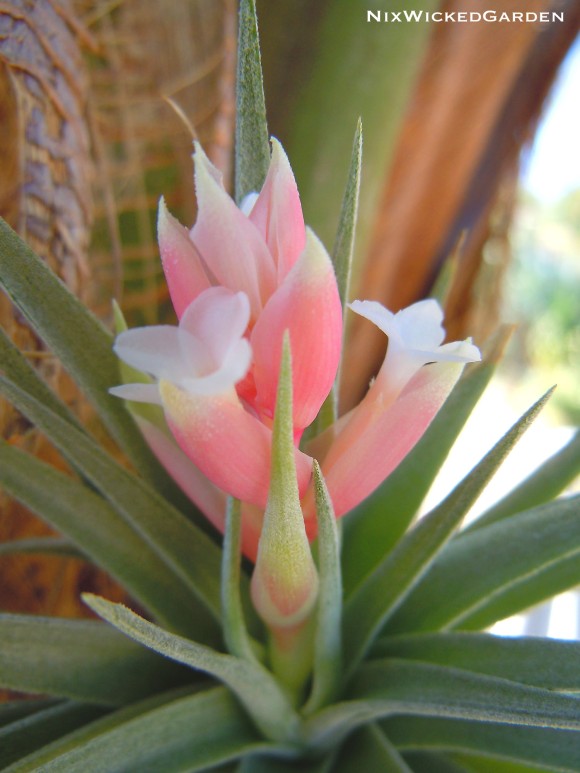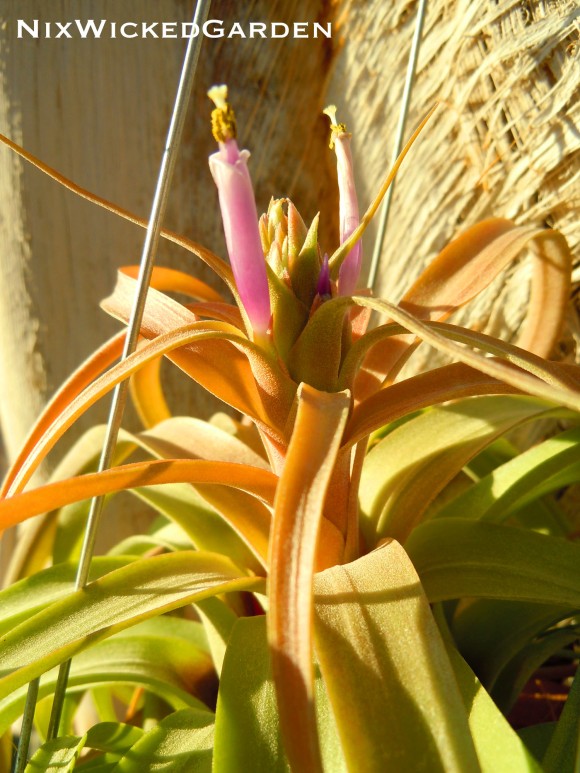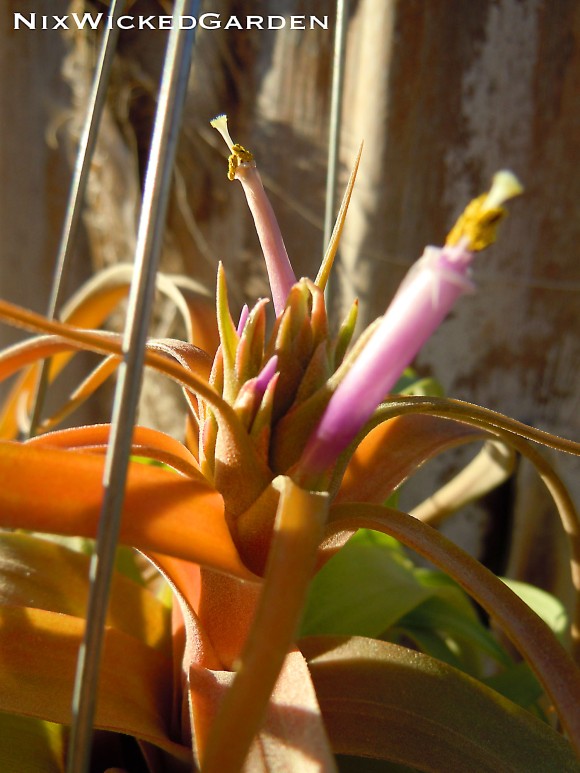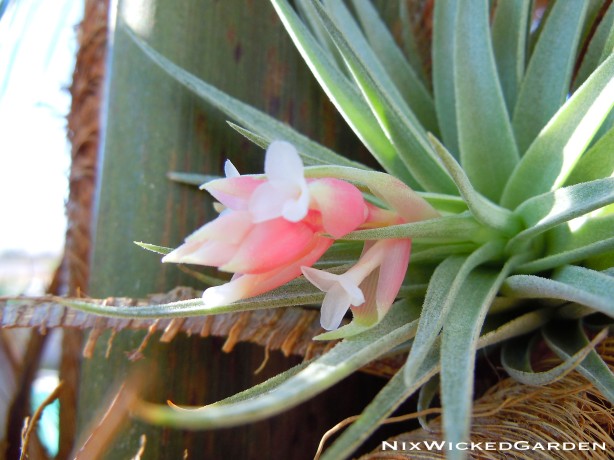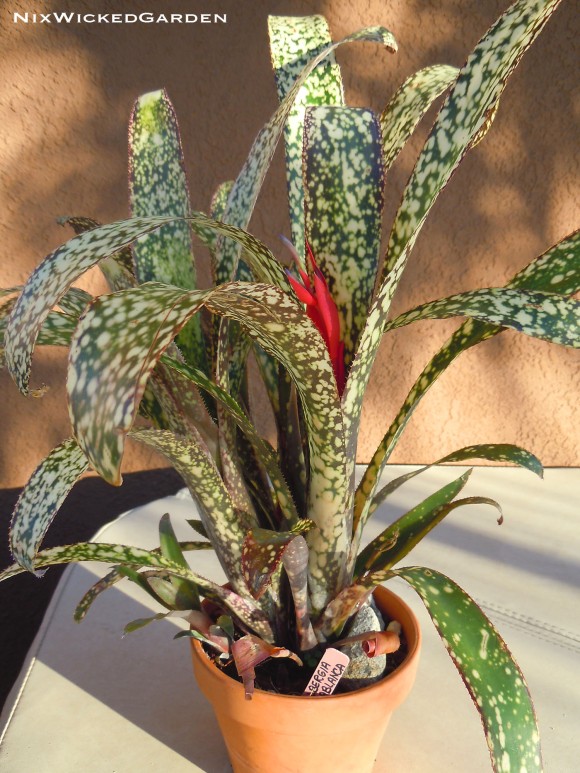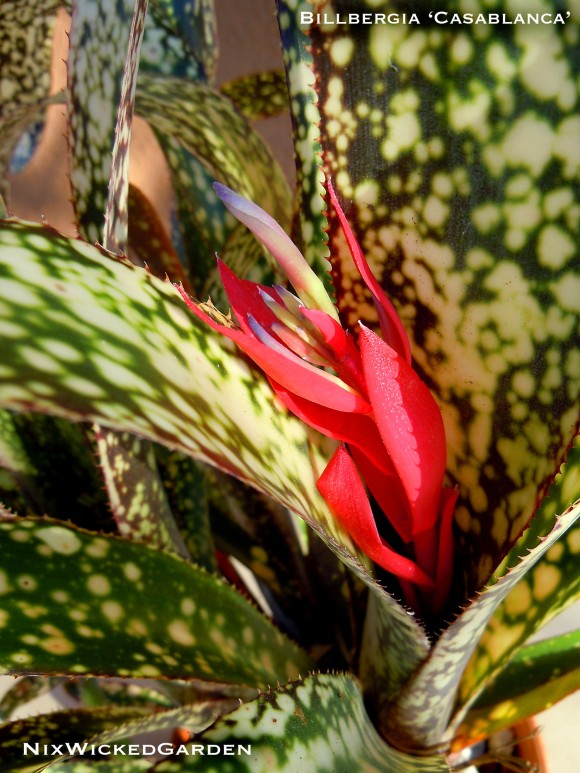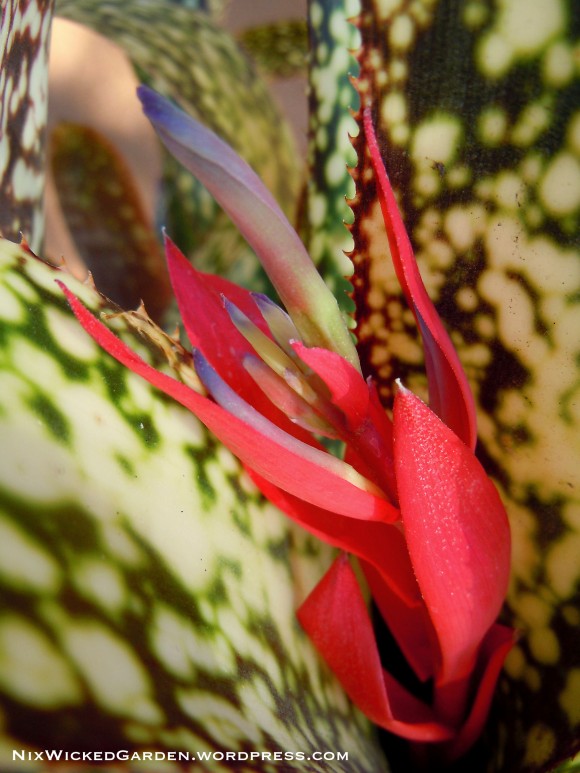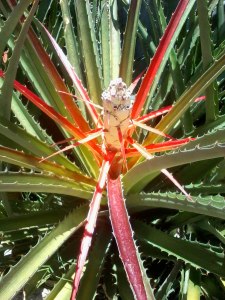Hummingbird resting on Aloe Dichtoma (Quiver Tree)
OK, Yes, the blog title is a Yazoo reference (I’m a huge Vince Clark/Alison Moyet fan!) I kept thinking about this song because of the crazy cold winter we are having (NOTHING compared to the rest of the country, but yet & still, cold for US). It has been awhile since I last made an entry. For the most part this is because I was doing damage control after freezing temps jacked up some of my fave Broms. I’ve been removing them from their planting media and pots, washing them well. letting them dry out a bit, then treating with SuperThrive & repotting them. A few seem to be perking up. Sadly, I lost 5 plants to the cores freezing and rotting out. An Aechmea ‘Greg’ was among them. I’m bummed! A. Greg is a Aechmea chantinii hybrid that has amazing leaf coloring & the inflorescence when blooming is one of the most showy of the Aechmea hybrids, in my opinion. I guess it is the yellow & salmon emerging from the purple/burgundy & olive green that really does it for me…
If I had more suitable plant-space in the house, I would have brought all the plants indoors. I did put most of the frost sensitive plants under our back covered patio for protection. The cold wind was something I didn’t factor into the equation. Everything just got chill-blasted from what seemed like every direction! I was afraid some of the “Tank-Broms” were going to have problems in the winter months—One reason I haven’t obtained more of these species. They are so attractive and that makes me want to buy them, but when I lose even one of them, it fills me with sadness & regret. The way our house was designed and constructed for energy efficiency here in the Desert, there aren’t many windows to provide bright sunlight for these sun-loving Bromeliads. What few windows we have, are already home to species I keep inside year-round. (The next house we get, I am going to insist on a conservatory or a sunroom!<LOL>) The climate in our house is much more hospitable to tropical Bromeliads, unfortunately, space is limited.
In my last post (My Birthday in the Rainforest) I stated I would post pictures of the plants I purchased at RFI. Here are photos of them below…
Vriesea philippo-coburgii
As sad as it is to lose plants to bad weather….Life does go on—and so I keep collecting plants like a Mad Man! As much grief as my Partner gives me about being a plant hoarder, He hasn’t really helped my addiction any. Here’s a plant that he picked up for me at a garden center for me for Valentines Day!! I tried to identify it with a name (could not)—Best as I can tell, it is some form of spineless Neoregelia hybrid. It sure it pretty though!
He also brought home an Orchid which is really beautiful. I cautioned him that HE is to be responsible for it as I have a ‘black thumb’ when it comes to growing Orchids (which is really unfortunate, because I meet so many Orchid collectors who want to trade plants with me! There is usually zero humidity here in the Desert which makes it oh-so-difficult for me to successfully keep them happy. Excuses, excuses…I know, because SOME HOW folks manage to grow them in Palm Springs quite well! *sigh*….)
Of course, I’ve got some new editions out in the backyard as well. Most are Hechtias with the odd Dyckia & Puya here and there. I have (just) A FEW more en route as I am writing this. I will endeavor to show them after they have arrived—along with the others I haven’t posted in this thread. Some that I bought from an online retailer look a bit stressed from their shipping journey. I wanted to treat them with Superthrive and see if they pretty up. This isn’t growth season for Bromeliads and I hesitate to fertilize ANY Terrestrial Brom in February for fear of burning. Perhaps, some of these guys just need some time to acclimate.
The majority of the new spiny fellows pictured below I have obtained from Andy Siekkinen (Seller sda128 on ebay) & Liz Butler (Seller redfinkelstein on ebay). They are both located in the San Diego area & the growing climate there is milder in summer as well as winter than here in the Desert. Plants I buy from both sellers always arrive healthy and in great shape after shipping. I can’t say enough good things about either and highly recommend them both as terrific sources for Terrestrial Bromeliads. I know Andy was President of The San Diego Bromeliad Society for quite a few terms and is owner of Eagle Eye Adventures: Botanically themed tours & Botanical education & exploration (www.eagle-eye-adventures.com). Liz Butler is proprietor of Cycad Mania and has been collecting for quite some time. If you are interested in finding out more detailed information about the Terrestrial Bromeliads pictured below, I recommend checking out XericWorld.com. It’s a forum site dedicated to growers, collectors, enthusiasts and admirers alike of Succulents, Cacti, Agave, Aloe as well as Bromeliads. I checked out threads there long before actually becoming a member. I’ve been finding some really useful information there as well as meeting cool like-minded gardeners. I would like to become more knowledgeable about other succulent plant species, Cacti, palms & Cycads. Xeric World Forums is a GREAT place to start learning & interacting!! 😉
